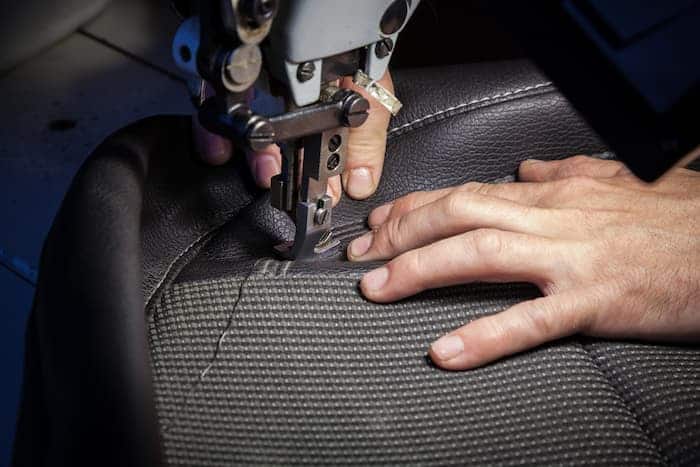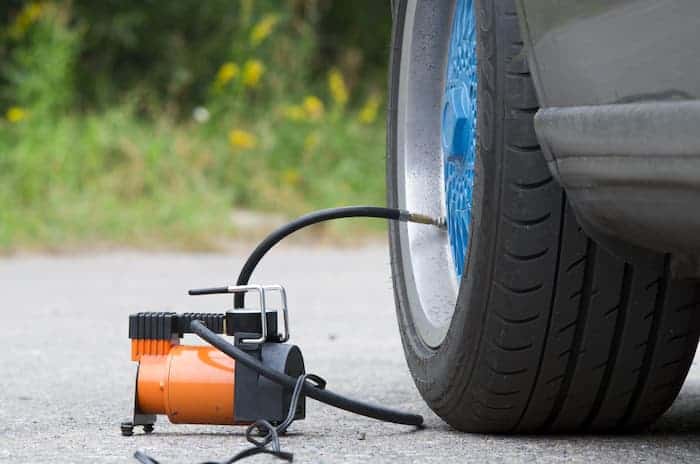Let’s face it: Your car is the center of your universe. Interiors made of leather are another vital component of luxury vehicles. Nothing can make you feel as warm and cozy as a seat made of soft leather.
But most of us fail to educate ourselves on leather maintenance. Instead, we simply let the upholstery wear out until it begins to tear, crack, or show signs of aging. Please read our advice on maintaining and repairing leather vehicle seats if you want to get the most out of your investment and enjoy high-quality leather seats for a long time.
If your leather car seat has a tear, hole, or crack, you might wonder if you need new upholstery. You can take care of minor damage on your own. Use a repair kit to mend tears, patch to patch holes, or use liquid leather to refinish the seats and cover cracks. A professional with upholstery skills should fix significant gouges and tears.
Table of Contents
ToggleRepair Leather Car Seats
There is no unique toolset because there are different ways to fix leather seats. However, you might require any of the items listed below.
- Warm soapy water
- Clean microfiber cloth
- 600 grit Sandpaper and sanding block
- Sharp scissors
- Patch Kits
- Denatured alcohol
- Wax paper
- Matching leather swatches
- Leather Adhesive
- Leather Dye
- Liquid leather
The patch and fill technique is the most effective way to fix tears. Cutting off any jagged edges of the damaged area is the first step. Next, sand the leather as you would a cracked surface after it is flat with the seat surface. The next step is to insert a piece of wax paper so that the edges rest behind the leather in the hole. The purpose of this wax is to prevent the leather adhesive that will be applied next from soaking into the cushions.
Your leather swatch must initially be somewhat more extensive than the hole size. To obtain the leather swatch, some auto owners decide to trim small parts of the surplus leather under the seat. After that, lightly sand the area around the tear to make a surface where the glue can adhere. After that, adhere the patch to the leather with leather adhesive. Finally, to seal the binding, lightly heat the area one more, taking care not to burn your seats.
How To Repair Crack Leather Car Seats

You must find a leather repair kit with a dye that complements your upholstery. After that, wash the area with warm, soapy water and rinse it clean. Then take a clean rag and apply denatured alcohol to it. Drying the surface with a fresh microfiber cloth is the last step.
After it has dried, softly sand the cracked leather region to make a surface for the liquid leather to connect. You can now fill the crack with liquid leather and wait for it to dry. Next, any entire leather surfaces should be cleaned of the liquid leather using a wet sponge. Apply layers in the same order after the first one has dried until they are the same height as the seat leather. You can always sand it down if it is uneven and apply a fresh coat to level it down.
The final step will be to cover the entire seat with a thin layer of diluted liquid leather to help conceal the repair. You can accomplish this by mixing the solution in water by 30%. If you want to make the leather supply more elastic and flexible when you stress the repair areas, you can use a leather conditioner once the repair has completely dried.
How To Repair Large and Small Tear in Leather Car Seat

Do your best first to clean up the damaged seat. Use color-matched vinyl in cleaning the sides of the leather seat due to its greater flexibility. In contrast, actual animal hides generally are used for the flat panels on the bottom and back. We found that some of the grain’s apparent dirt was cracked and damaged leather that needed to be redyed or given a color coat (which we might attempt later). Clean thoroughly before moving further with repairs to eliminate any additional chemicals used on the surface. Petroleum-based or silicone-based treatments are harmful since water and oil don’t mix.
After the material has been thoroughly cleaned and scrubbed, the first step in the repair entails using a palette knife to apply tiny layers of a repair compound between the vinyl’s broken edges, straight onto the white backing material. As a result, the car’s seat edges are not stitched together, as would be the case with mending a ripped item of clothing. Instead, the repair serves as a patch or filler. Next, apply a piece of flexible material with a grain imprint that gives the smooth surface of the patch a similar texture after briefly heating the patch with a heat gun to cure it.
Once that has dried, thoroughly clean the area, then use a vinyl-prepping compound to ensure the color will stick as intended. Next, use masking tape to “tape test” the surface to ensure it is sufficiently sticky and ready to take the dye. Since beige upholstery is typically the most difficult to match, spraying on the color topcoat proved to be the most challenging step. Next, try a few different tint combinations from dye bottles to acquire the precise shade.
This repair is more than simply a stitch in time and can be done on various soft and hard plastics, leather upholstery, and other materials. Your repair might appear as good as new with a bit of artistic flair and color sense.
How To Repair a Pinhole Tear in Leather Car Seat

PIN pinholes from cigarettes or punctures are even simpler to fix than a tear or crack. You may quickly patch in a small hole with liquid leather, just like you would a rip if it is big enough. If it’s bigger, you’ll fill it using the patch method and smooth out the seams using a filler like liquid leather.
Applying liquid leather is fantastic because it serves as both a filler and an adhesive. This indicates that simple procedures are not necessary to achieve the optimum outcome. It’s excellent for blending, smoothing out the surface, and making the repair last. You should carefully follow the patch kit directions for all these repairs, and you shouldn’t sit down on the fixed seats until they have thoroughly dried and cured.
What Is the Best Way to Repair Leather Car Seats?
Put a sunshade on. The fading and cracking of leather seats are brought on by direct sunlight. Protect the leather from intense heat and light by placing an extendable sunshade on your windshield. Cover the windshield with a sunshade when your car is exposed to the sun for an extended period, such as when it is parked in the workplace parking lot during the day.
Regularly condition the leather. Leather is more prone to tearing or cracking as it dries out. Every six months or so, clean the leather seats and then condition them. Apply the leather conditioner evenly throughout the car seat using a soft cloth and tiny circular motions.
Avoid using sharp things. Sharp things like keys, implements, pocket knives and other objects can rip or puncture the leather of your chairs. Before getting in the automobile, take any sharp objects out of your pockets. A thick blanket should be placed over your seats before placing sharp objects in the trunk or on the ground.
Conclusion
Even while you can fix leather and conceal the damage, it would be preferable to let an expert handle it. For most automobile owners, the decision comes down to practicalities and how long you want to keep the car. You may fix the leather vehicle seats if you have an afternoon to spare. We can fix your chairs if you have a little money and don’t want to mess with it. In either case, you don’t have to have damaged or torn seats or holes in them.




